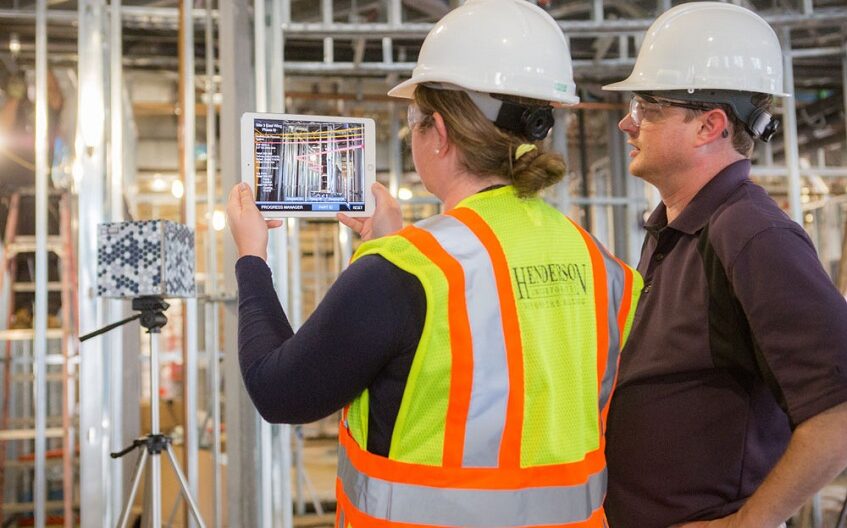
Many different development platforms are available when it comes to creating immersive and engaging experiences in virtual or augmented reality. Two of the most popular options are Unity and Unreal Engine. Each platform has its own pros and cons, so it’s important to understand which one is best suited for a particular project before choosing a platform. In this article, we will compare Unity vs Unreal for VR or AR Development Projects to help you make an informed decision. Let’s get started!
What is Unity?
Unity is a cross-platform game engine and development environment designed to help developers quickly create immersive virtual reality (VR) and augmented reality (AR) projects. It uses the C# programming language, making it easy to learn for beginners and seasoned coders. Unity supports multiple platforms, including Android, iOS, Windows, PlayStation 4, Xbox One, Oculus Rift, Viveport and more.
The software includes tools for creating 3D models and animations and advanced features like particle systems and physics simulations. Unreal game development services use the Unreal Engine, a powerful toolset for creating immersive worlds.
Advantages of Unity
Mentioned below are some of the major advantages of Unity when it comes to VR or AR development projects:
Unity offers an intuitive and user-friendly interface that makes it easier for developers of any skill level to create immersive experiences.
Unity supports both 2D and 3D development, making it easier for developers to create complex projects. It also has a variety of platforms available, including a mobile (Android/iOS), desktop (Windows/MacOS) and consoles (Xbox One, PlayStation 4).
With Unity, developers can easily access tools such as AI navigation system, pathfinding algorithms and physics engine, allowing them to build and deploy their projects quickly.
Unity also has a wide range of debugging tools that can help developers identify problems more efficiently, as well as robust tutorials and educational materials for those just starting the platform.
What is an Unreal Engine?
Unreal Engine is a game engine used to power some of the most popular video games in recent years. It is known for its high-end graphics and real-time interactive 3D capabilities, making it a great choice for virtual reality (VR) or augmented reality (AR) projects.
Unreal Engine also features an extensive suite of tools, including Blueprint visual scripting, physics engine, AI systems, cinematics editor, animation tools, terrain editing tools, landscape generator, particle effects editor, and more. A virtual reality game development company can use Unreal Engine to build and maintain complex interactive worlds.
Advantages of Unreal Engine
The advantages of Unreal Engine are as follows:
Unreal Engine’s Visual Scripting tool makes programming complex interactions and behaviors easy without coding skills. This makes it a great choice for developers who want to create visually striking experiences with minimal effort.
Unreal Engine offers a wide range of tools for creating virtual and augmented reality environments, including VRTK, an open source library for quickly developing VR projects.
The powerful lighting engine in Unreal Engine allows developers to create photo-realistic visuals that look amazing on all platforms.
The engine’s physics engine provides realistic simulations of how objects interact, making it ideal for creating immersive world simulations.
Comparison of Unity vs Unreal
1. Cost Considerations
When it comes to cost, Unity provides a more affordable option for developers. Using their basic platform and toolset is free, while upgrades can be purchased as needed. On the other hand, Unreal requires developers to purchase the entire suite up front or pay monthly subscription fees.
However, Unreal does provide access to multiple toolsets and resources which could save time in development, so this should be considered when weighing cost factors.
2. Platform Support
Unreal Engine supports both PC and console gaming platforms such as PlayStation 4, Xbox One, Nintendo Switch, iOS and Android. It also supports virtual reality (VR) and augmented reality (AR), allowing developers to create high-quality 3D content for various applications across multiple devices.
Unity Engine focuses more on mobile development and supports the most popular platforms, including iOS, Android, Windows Phone 8, Playstation Vita and others. Unlike Unreal Engine, however, it does not support VR or AR out of the box and requires separate SDKs to be integrated.
3. Graphics Performance
When it comes to graphics performance, Unreal Engine is the clear winner. With its state-of-the-art rendering pipeline and advanced lighting capabilities, Unreal can produce stunning visuals and immersive experiences for virtual reality (VR), augmented reality (AR), and mixed reality (MR) applications. Unity also offers good graphics performance but falls short when compared to Unreal’s features.
4. Programming Languages Supported
Unity supports C# and JavaScript programming languages, while Unreal Engine only uses C++. This can be an important consideration for developers who are more comfortable with one language over the other. When developing virtual reality (VR) or augmented reality (AR) applications, being able to code in a familiar language will make things smoother and easier for developers.
5. Audio and Visual Effects
Unity provides an Audio Mixer, allowing users to control each sound effect’s volume in a project. It also offers the ability to apply effects such as reverb and echo, making it easier to craft immersive audio experiences. Unreal’s audio capabilities are more advanced, with features such as attenuation and occlusion. Unreal can also create dynamic audio, where the sound adjusts depending on the user’s position in the virtual environment.
The Bottom Line
When deciding between Unity and Unreal for VR or AR development projects, it really depends on the project’s specific needs. Each engine has its own strengths and weaknesses, so taking the time to understand the project’s requirements is essential.
Ultimately, what’s best for one project may not be the ideal solution for another. By understanding your particular needs and researching both options carefully, you can decide which option will best suit your project.
